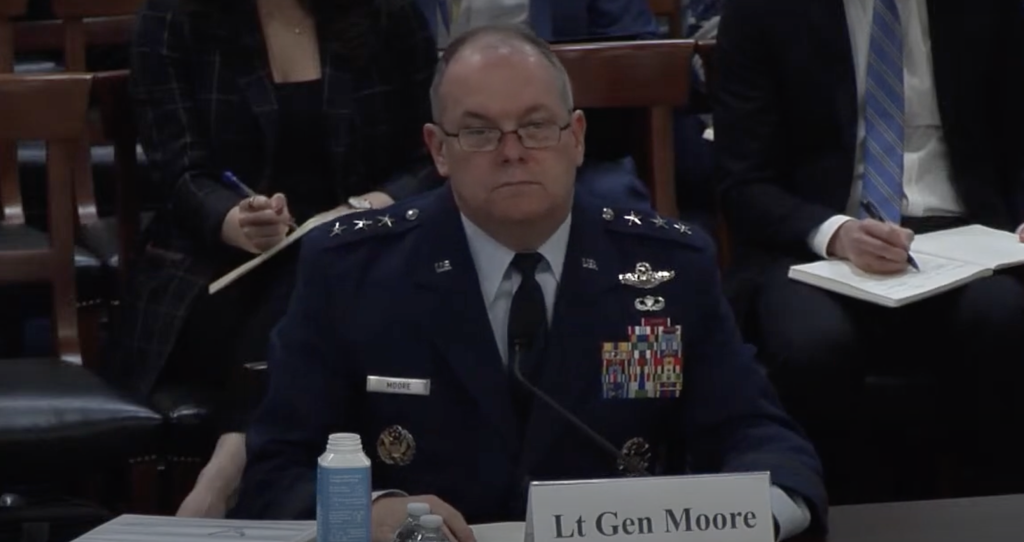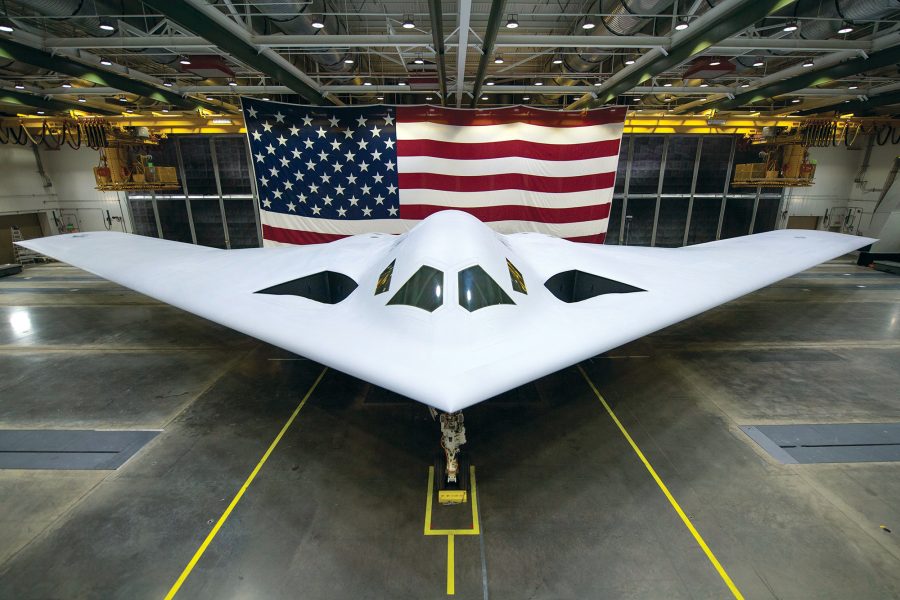While former generals, airpower experts, and even the head of U.S. Strategic Command have all endorsed the idea of the service buying more than 100 B-21 bombers, the Air Force deputy chief of staff for plans and programs suggested a formal decision on that front isn’t coming anytime soon.
“The decision point, with lead time accounted for, to go past 100 is not until the mid to late ’30s,” Lt. Gen. Richard G. Moore Jr. told lawmakers on the House Armed Services Committee on March 12. “So the commitment right now is to 100 aircraft. That takes us for procurement into the late ’30s. The decision whether or not to go past that may very well not be based on China, because it will be made at a time when we don’t foresee the security environment and we don’t need to.”

For years now, the Air Force has planned on buying a minimum of 100 B-21s to replace its B-1 Lancers and B-2 Spirits. All the while, multiple heads of Air Force Global Strike Command and other observers have suggested the service really needs more of the stealth bombers to effectively counter the likes of China.
Most recently, STRATCOM boss Gen. Anthony J. Cotton told lawmakers Feb. 29 that the bomber’s low production rate was “the only thing that I wish we could do a little quicker.”
“The fact that that is an incredible sixth-generation platform, all indications are that the weapons system is moving along at a great pace as far as delivery,” Cotton added. “The ability for production and the number of production, as a warfighter, obviously, I would love more.”
There is one B-21 currently in flight testing that the Air Force has acknowledged, and at least five aircraft in some stage of construction. At least five of the six B-21s will be dedicated to test activities, but after developmental and operational testing is complete, those aircraft will have their test instrumentation removed and be modified into operational bombers.
Getting from six to 100 aircraft by 2039 will require between six or seven bombers to be built per year.
The exact rate per year, however, is unclear—much about the B-21 program is shrouded in secrecy, and the Air Force has not disclosed the exact number of aircraft included in the five lots throughout the Low-Rate Initial Production phase, or how long that phase will last. The Congressional Research Service estimated in 2021 that there will be 21 aircraft across those five lots.
Manufacturer Northrop Grumman received its first LRIP contract after the B-21 had its first flight in November from Air Force Plant 42 in Palmdale, Calif. That bomber has moved to Edwards Air Force Base for more flight testing.
Moore said it is premature for the Air Force to make a call on whether it needs to acquire more than 100 airframes at this juncture.
“This is not a decision that needs to be made now, but it is one that we need to continue to think about,” Moore noted. “Gen. Cotton has probably the best insight of anybody on this and certainly on active duty he has the most experience both in depth and breadth. So his counsel is well taken.”
While the B-21 ramps up, Chinese military officials disclosed in March 11 interview with a Chinese state-owned newspaper that the new Xi’an H-20 bomber could soon be revealed to the public. While details about the aircraft’s specifications and procurement numbers are scarce, reports have compared the Chinese bomber to the U.S. Air Force’s B-2 and the incoming B-21.


